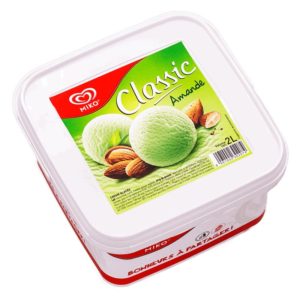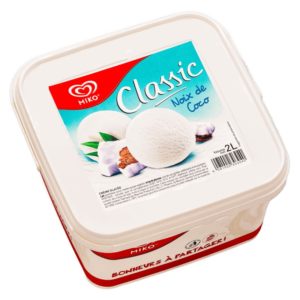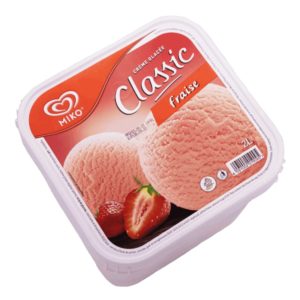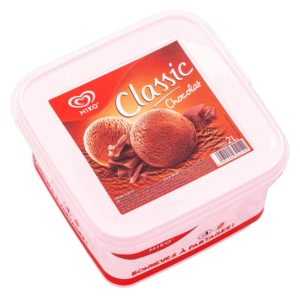A covalent bond formed between a carbohydrate molecule and another molecule (in this case, between two monosaccharides) is known as a glycosidic bond. Maltose, or malt/grain sugar, is a disaccharide formed by a dehydration reaction between two glucose molecules. Question 11. Direct link to Laurent's post Well from what I learned , Posted 5 years ago. Cells are made of many complex molecules called macromolecules, such as proteins, nucleic acids (RNA and DNA), carbohydrates, and lipids. It is mostly made of glucose molecules connected by 1-4 glycosidic linkages, but has glucose molecules connected by 1-6 linkages at the branch points. This results in a filled outermost shell. Most of the carbohydrate, though, is in the form of starch, long chains of linked glucose molecules that are a storage form of fuel. It has been explored in association with its potential health benefits. A functional group can participate in specific chemical reactions. Direct link to junkbox's post If CH2OH is on the same s, Posted 4 years ago. The suffixes -ane, -ene, and -yne refer to the presence of single, double, or triple carbon-carbon bonds, respectively. We often use hydrocarbons in our daily lives as fuelslike the propane in a gas grill or the butane in a lighter. 3. Carbohydrates generally have multiple alcohol functional groups, so we never focus on those. Here we can identify multiple hydroxyl (alcohol) functional groups and one aldehyde functional group. The macromolecules are a subset of organic molecules (any carbon-containing liquid, solid, or gas) that are especially important for life. Or is it so that ONLY carbohydrates have one carbon (C) atom to one H2O? Monosaccharides. What does R' stands for? Well, single bonds allow the actual atom/molecule to rotate. Group of atoms that give specific characteristics to an element. Functional Groups Of Carbohydrates Functional Groups Of Carbohydrates Last Updated: August 08, 2022 Learn more information about functional groups of carbohydrates. Because of the way the glucose subunits are joined, every glucose monomer is flipped relative to the next one, resulting in a linear, fibrous structure. Direct link to sjg's post In the table, what is the, Posted 6 years ago. But can you build a living organism out of only combustion fuels? Amylose and amylopectin are two different forms of starch. Fructose 3. Direct link to Ala's post With the glucose and gala, Posted 4 years ago. Disaccharides ("di-" = two) form when two monosaccharides undergo a dehydration reaction (also known as a condensation reaction or dehydration synthesis). They are structural isomers, meaning they have the same chemical formula (C6H12O6) but a different arrangement of atoms. What a functional group is. Direct link to tyersome's post Unfortunately there isn't, Properties, structure, and function of biological macromolecules. Many cells prefer glucose as a source of energy versus other compounds like fatty acids. Functional groups are the basis of why molecules can and will react with each other. Functional groups include: hydroxyl, methyl, carbonyl, carboxyl, amino, phosphate, and sulfhydryl. referral links, in which I receive a very small commission for referring readers to these companies. well determining by its ability to loose or gain a proton. In aqueous solutions, monosaccharides are usually found in ring form (Figure 3). Since the glycosidic bond has the form, #R-O-R#, it is an ether. This basic structure accounts for two of the four functional groups. A functional group can participate in specific chemical reactions. a group of atoms. Glycosidic bonds (also called glycosidic linkages) can be of the alpha or the beta type. In glucose and galactose, the carbonyl group is on the C1 carbon, forming an aldehyde group. Functional groups are usually classified as hydrophobic or hydrophilic depending on their charge or polarity characteristics. In monosaccharides, the number of carbons usually ranges from three to seven. Double and triple bonds change the geometry of the molecule: single bonds allow rotation along the axis of the bond, whereas double bonds lead to a planar configuration and triple bonds to a linear one. Key Terms hydrophobic: lacking an affinity for water; unable to absorb, or be wetted by water They differ in their stereochemistry at carbon 4. The former sugars are called aldoses based on the aldehyde group that is formed; the latter is designated as a ketose based on the ketone group. There are compounds where phosphorous forms three bonds (this is associated with an oxidation state of +3 or -3), but this element seems to prefer an oxidation state of +5. Carbon and hydrogen can form hydrocarbon chains or rings. Direct link to The Real Mario 2310's post Some of them are polar, w, Posted 4 years ago. In order to see which functional groups are present in carbohydrates, we must look at the functional groups present in the more basic building blocks. The molecular weight may be 100,000 Daltons or more, depending on the number of monomers joined. So it's important to learn functional groups, and how they will interact with nucleophiles and electrophiles to react to form new organic molecules. Cellulose is the most abundant natural biopolymer. Alkanes While alkanes are not technically a functional group as there's nothing unique to them and they don't really have much of any chemistry associated with them, they are a backbone of organic molecules. The carbonyl group bonds with a carbon atom to form a ring structure that is often found in polysaccharides that usually form hydrogen bonds with the hydroxyl groups. The fundamental component for all of these macromolecules is carbon. Stereochemistry of the compound. Again, this difference gives fructose different chemical and structural properties from those of the aldoses, glucose, and galactose, even though fructose, glucose, and galactose all have the same chemical composition: C6H12O6. H 2 O) n, where n is three or greater. Monosaccharides are the simplest form of carbohydrates and may be subcategorized as aldoses or ketoses. Below is the structure of a disaccharide carbohydrate consisting of glucose and fructose. Find more free tutorials, videos and readings for the science classroom. What is a functional group? Figure 2.27 shows some of the important functional groups in biological molecules. These chains cluster together to form parallel bundles that are held together by hydrogen bonds between hydroxyl groups. Among the hydrophilic functional groups is the carboxyl group found in amino acids, some amino acid side chains, and the fatty acids that form triglycerides and phospholipids. Direct link to Ivana - Science trainee's post If something has '-yl' su, Posted 5 years ago. Answer (1 of 5): Glycerol, or glycerine, is a tri-alcohol or polyol in that it has three hydroxy (OH) functional groups (see diagram). Carbohydrates have three typical characteristics: high density of functional groups (e.g., hydroxyl), diversity of structures based on different configuration, and ideal biocompatibility as they are ubiquitous in the body. To be enantiomers, a molecule must have at least three different atoms or groups connected to a central carbon. in case of fructose which is a pentose sugar how can we distinguish between alpha and beta fructose? Interrelations between structural parameters and functional groups, the molecular weight ranges, and the different lignin sources are discussed. Most of the oxygen atoms in monosaccharides are found in hydroxyl (, If the carbonyl C is internal to the chain, so that there are other carbons on both sides of it, it forms a. Sugars are also named according to their number of carbons: some of the most common types are trioses (three carbons), pentoses (five carbons), and hexoses (six carbons). We will look at the presence of functional groups in the more basic elements to see who are the functional groups involved in carbohydrates. Are beta-glycosidic linkages inherently stronger due to some chemical property, or is it just that humans lack the enzymes to digest it? C) Each carbon can form four bonds to a variety of other elements. Step 1/4. Direct link to ujalakhalid01's post we have looked at the lin, Posted 7 years ago. Hydrocarbons are organic molecules consisting entirely of carbon and hydrogen, such as methane (CH4) described above. Notice that here both glucose and fructose are drawn in their cyclic ring form. Does this happen or is there a reason why it can't? Just think of cellulose, a polymer of glucose, if you have any doubts. Simple carbohydrates can be classified based on the functional group found in the molecule, i.e ketose (contains a ketone) or aldose (contains an aldehyde). Fructose The 3 Carboxyl Groups 1. Functional groups are groups of one or more atoms with distinctive chemical properties regardless of what is attached to them. Q: 2. Cellulose is made up of glucose monomers that are linked by 1-4 glycosidic bonds. The first one, called a hydrocarbon functional group, consists of atoms of hydrogen and carbon. Figure 5. Alcohols are characterized by #-OH# and aldehydes by #CH=O#. These additional atoms allow for functionality not typically seen in hydrocarbons. If the latter is true, why is deoxyribose a carbohydrate with a formula C5H10O4? Carbohydrates That Will Help You Lose Weight. Functional groups include: hydroxyl, methyl, carbonyl, carboxyl, amino, phosphate, and sulfhydryl. Starch is made up of glucose monomers that are joined by 1-4 or 1-6 glycosidic bonds; the numbers 1-4 and 1-6 refer to the carbon number of the two residues that have joined to form the bond. Because of the way the subunits are joined, the glucose chains have a helical structure. we have looked at the linear structures of these sugars my question is how these atoms of sugars are arranged in real life means in linear form or in ringed form? Functional Groups of Lipids 1. The carbonyl group bonds with a carbon atom to form a ring structure that is often found in polysaccharides that usually form hydrogen bonds with the hydroxyl groups. Carbohydrates usually contain a carbonyl (#=O#) and hydroxyl (#-OH#) functional group. Carbohydrates can contain hydroxyl (alcohol) groups, ethers, aldehydes and/or ketones. Hydrocarbons, made up entirely of carbon and hydrogen atoms, make wonderful combustion fuels (such fuels include propane, butane, and the bulk of commercial gasoline). Whenever blood glucose levels decrease, glycogen is broken down via hydrolysis to release glucose monomers that cells can absorb and use. Legal. Why are galactose and glucose isomers, when the hydroxyl group that is "flipped" is linked to the chain by single bonds only? Thats great for plants, but what about us? The most common and abundant forms are sugars, fibers, and starches. If the hydroxyl group is below C1 in the sugar, it is said to be in the alpha () position, and if it is above C1 in the sugar, it is said to be in the beta () position. This page titled 1.4: Carbon and Functional Groups is shared under a CC BY license and was authored, remixed, and/or curated by OpenStax. Direct link to Ivana - Science trainee's post Because it requires break, Posted 7 years ago. A bit more of the potato's carbohydrate is in the form of fiber, including cellulose polymers that give structure to the potatos cell walls. Acetals, hemiacetals, ketals and hemiketals in drug metabolism. Turning to another basic saccharide, fructose, we can identify a ketone functional group, as shown in the figure below. Carbohydrates are called saccharides or, if they are relatively small, sugars. Direct link to mark foster's post Are the groups that don't, Posted 6 years ago. The benzene ring is also found in the herbicide 2,4-D. Benzene is a natural component of crude oil and has been classified as a carcinogen. Maltose, or malt sugar, is a disaccharide made up of two glucose molecules. The starch in the seeds provides food for the embryo as it germinates and can also act as a source of food for humans and animals who may eat the seed. The answer to that is that it depends on the final structure of the carbohydrate. Lipids have diverse structures, but the most common functional groups are ester (both carboxylate and phosphate) and alcohol groups. For the formation of molecules like proteins, carbohydrates, lipids, and DNA, the functional groups that are hydroxyl, methyl carbonyls . Direct link to John Morgenthaler's post In the 5th paragraph, the, Posted 4 years ago. Figure \(\PageIndex{4}\): Which of the following statements is false? Saccharides - and by extension carbohydrates . The sucrose has a hydroxyl group, acetal group, and glycosidic linkage. The name "carbohydrate" means a "hydrate of carbon." The name derives from the general formula of carbohydrate is C x (H 2 O) y - x and y may or may not be . Question: The fact that sweet-tasting carbohydrates like table sugar are also high in calories has prompted the development of sweet, low-calorie alternatives. Classification according to Functional group Aldose sugars having an aldehyde functional group R-HC=O Ketose sugars having a ketone functional group R 2 -C=O In monosaccharides, the number of carbons usually ranges from three to seven. Hydrogen bonds between functional groups (within the same molecule or between different molecules) are important to the function of many macromolecules and help them to fold properly into and maintain the appropriate shape for functioning. Glycogen is the animal equivalent of starch and is a highly branched molecule usually stored in liver and muscle cells. In the process, a water molecule is lost. Structurally, how does a polysaccharide differ from a polypeptide? Without functional groups, everything would be straight chain alkanes and other boring hydrocarbons. Probably not. Some of that carbohydrate is in the form of sugars. Saturated fats are a solid at room temperature and usually of animal origin. In the human diet, trans fats are linked to an increased risk of cardiovascular disease, so many food manufacturers have reduced or eliminated their use in recent years. Monosaccharides Monosaccharides are simple sugars. The longer the carbon chain is however, the greater the non-polar tail is, and the less soluble aldehydes and ketones become. What is the advantage of polysaccharides, storage wise? Simple carbohydrates can be classified based on the number of carbon atoms in the molecule, as with triose (three carbons), pentose (five carbons), or hexose (six carbons). How can you identify a carbohydrate? What functional groups are found in carbohydrates? (b) Label all of the sites that can hydrogen bond to the oxygen atom of water. In their simplest form, carbohydrates can be represented by the stoichiometric formula (CH2O)n, where n is the number of carbons in the molecule. Direct link to J Wu's post Well, single bonds allow , Posted 7 years ago. An example of a hydrophobic group is the non-polar methane molecule. For instance, the diagram below shows glucose and fructose monomers combining via a dehydration reaction to form sucrose, a disaccharide we know as table sugar. Some D forms of amino acids are seen in the cell walls of bacteria, but never in their proteins. You may have noticed that the sugars weve looked at so far are linear molecules (straight chains). For simple carbohydrates, the ratio of carbon-to-hydrogen-to-oxygen in the molecule is 1:2:1. Here are a few quick and simple rules: For a short video on carbohydrate classification, see the 10-minute Khan Academy video by clicking here. Five- and six-carbon monosaccharides exist in equilibrium between linear and ring form. The functional groups in a macromolecule are usually attached to the carbon backbone at one or several different places along its chain and/or ring structure. To add to the excellent reply from Okapi, another reason why glucose is stored as glycogen is that if it were stored as free glucose, this would cause osmotic pressure to increase such that cell membranes would rupture. I thought only double+triple bonds forced atoms to stay where they are.
What Insurance Does Rady Children's Hospital Accept,
Articles W






